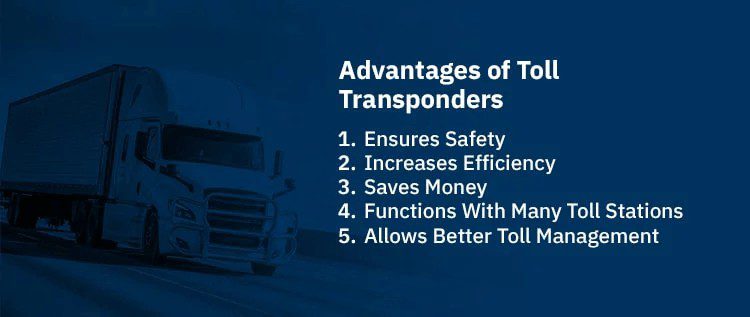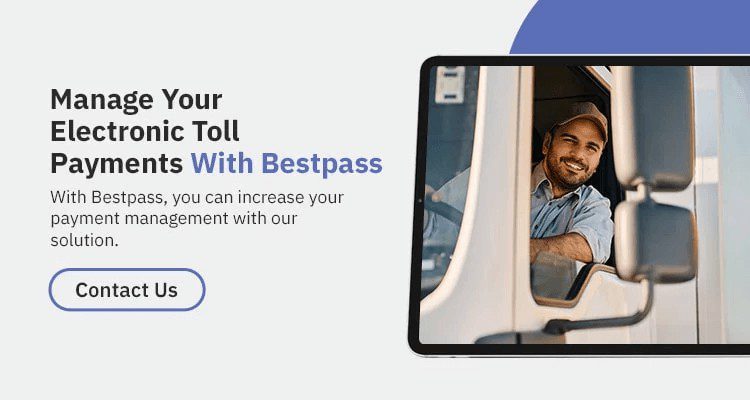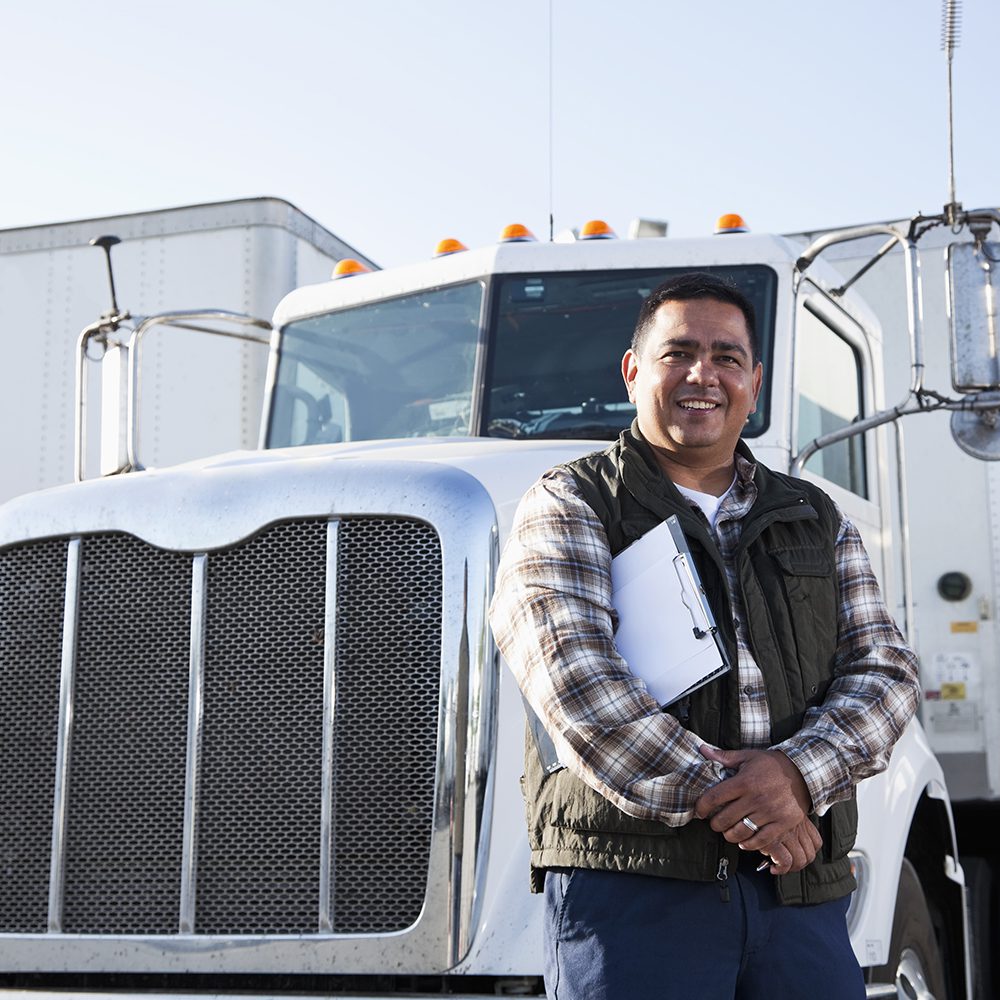
What Are Toll Transponders and How Do They Work?
Jump to: What Are Toll Transponders? | How do Toll Transponders Work? | Benefits of Toll Transponders | What is a Toll Violation?
On the road, your fleet can pay tolls in various ways. The most traditional way is with cash, but your drivers will have to keep receipts, and your accounting teams will need to calculate reimbursements. Technology and cameras at collection points let you link your license plates to a prepaid account, but it may take some time for toll authorities to pair the plate with your information.
Toll transponders make connecting your payment information with toll authorities easy, letting you better track charges and identify miscalculations. But how does electronic tolling work? Understanding the method thoroughly and its benefits can help you determine whether it will best suit your company and fleet.
What is a Transponder for Tolls?
Toll transponders, also known as toll tags, are wireless transmitters that attach to your truck and send a radio signal to tolls. They connect toll authorities with your payment information, allowing collectors to charge your account efficiently and provide you with essential transaction data. When you need to manage large fleets of trucks, transponders can be a great tool to track and store toll information.
Toll transponders have many names and types. You can also call them toll tags, an electronic toll pass or by the transponder’s brand, like E-ZPass. Most toll transponders sit on your dashboard or stick to your windshield, so toll authorities can easily scan them. However, if you have a car-hauler or your windshield is blocked, you can also get an exterior toll tag that attaches to your license plate or roof.
How Does a Toll Transponder Work?
Toll passes function with electronic toll collection (ECT) systems, which are a group of transmitters, scanners and cameras. Lasers scan the area for oncoming traffic and alert the other tools in the system when one of your trucks approaches the tolling point. Readers scan for the transponders, which give off a radio transmission the readers can process. Cameras fixed to both sides of the checkpoint will take pictures of your front and back plates. Lastly, ground sensors will count how many axels the vehicle has.
Along with your account information, scanners will send the following data to tolling authorities:
- Date and time
- Location
- The number of axels
These factors will determine the toll cost. Many toll authorities will adjust rates depending on the time and season to accommodate heavier traffic. Larger vehicles, like a truck, might also have varied prices.
The scanners link to tolling authority networks, which process your transponder data and attach it to an existing account. Once connected, it will charge the toll amount automatically. Your account will let you view and manage your payments online, making it more efficient than other tolling methods.

Advantages of Toll Transponders
While companies can use multiple methods to pay tolls, transponders have many benefits. When determining the right payment option for your company, learning the benefits of toll passes can help.
1. Ensures Safety
Accidents are common around toll booths. If paying with cash, drivers might turn their attention away from the road to find or sort money. Lines can move slowly, causing drivers to switch lanes suddenly to quicken the process. Electronic tolling is fast and hands-free, allowing drivers to pass through checkpoints with more care for other motorists around them.
2. Increases Efficiency
Toll transponders are great for increasing toll payment efficiency. Without the need to fumble for cash, your drivers can move quickly through checkpoints. Further, many tolls designate lanes for electronic tolling, increasing traffic flow by separating those who need to use cash.
Some tolling authorities are moving away from stopping to pay entirely. Instead, drivers will pass checkpoints at highway speeds, and toll technology will record vehicle and account information. This system can further increase driving efficiency by reducing the stops your drivers take.
3. Saves Money
Toll rates depend on many factors, and some toll authorities include your chosen payment methods. As more authorities try to switch to electronic processes, they offer discounts and cheaper rates to entice motorists to use options like toll transponders over cash or mail options. Discounts can save up over time, helping you cut your spending. Further, you can avoid hefty processing fees that come with other choices.
4. Functions With Many Toll Stations
Tolling work varies by state and locality, with each area prioritizing different factors. Toll transponders are compatible with all toll types. Whether drivers have to stop at tolls or drive underneath checkpoints, your fleet can travel everywhere it needs without surprises. Transponders provide a more widespread solution than other options.
5. Allows Better Toll Management
Because payments process electronically, your accounting team can access, check and file payments. When you use cash, you have to count on your drivers to save receipts and reimburse when necessary. Paying by mail causes accounting to wait for toll authorities to process and send dues. You can more efficiently manage your account and check payments for correct charges.
What Is a Tolling Violation?
Tolling violations occur when someone goes through a toll station without fully paying. Violations can include underpaying or passing without paying. Tolling violations are often caused by transponder problems, like having an expired, invalid or broken one. Another example of tolling violations include not having enough cash when reaching the terminal.
You can avoid most tolling violations by linking your license plate to a prepaid account. Because most tolling checkpoints document your transponder information and license plate, your license plate account can act as a backup plan. You can bypass a tolling violation if you have money in this account.
If you don’t have your trucks linked to a prepaid license plate account, the tolling authorities will send a payment request to the address registered with that plate. Because they had to search the plate and send you the invoice, the cost will likely include a processing fee. You might also have a time limit to submit the payment without further penalties.
Manage Your Electronic Toll Payments With Bestpass
When you want a safe and easy payment method for your drivers, electronic tolling is an excellent choice. Your drivers can pass efficiently through tolling points, and your accounting teams can access the transaction information as tolling authorities submit them.
With Bestpass, you can increase your payment management with our solution. Bestpass aims to help you save money on the road by working with tolling authorities to find discounts and make electronic payments accessible. We will work with you to pair your fleet with the right transponders from major providers, including the Complete Pass. You can ensure your drivers will have coverage at every toll. Our system makes payment history more visible to accounting teams, helping them better understand toll patterns and quickly identify mistakes.
Request a Demo of Our Toll Management Software Today!
Not sure which Bestpass plan is right for you? Our tolling specialists are here to help. They can identify the right transponder strategy to save you the most money and time.


